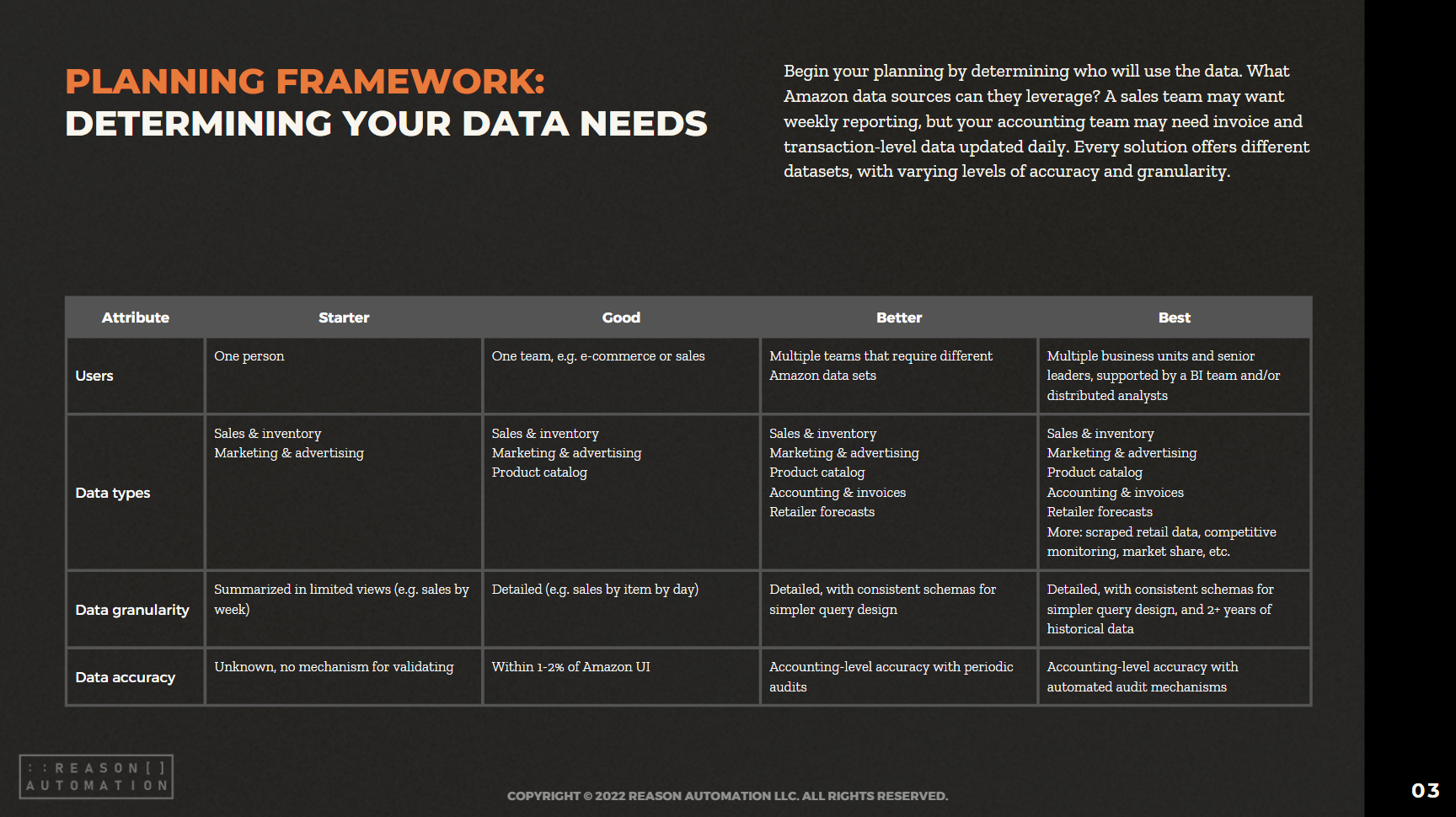Amazon Vendor Central Download Catalog Guide
Running your business as an Amazon vendor means constantly troubleshooting operational issues that you come across in order to keep everything running smoothly. And one of the best ways to do that is by staying on top of your product catalog within Amazon and understanding what's in it.
Your product catalogue is packed with information on everything from product measurements to descriptions, and this information affects things such as what information shows up on your product page and whether you’ll run into problems with packing and shipping. As a result, it’s an important spreadsheet to have access to.
This guide will describe how to locate your catalog within Vendor Central, how to download it, what replenishment codes are, and what resources are available to help you navigate the catalog.
Note: Are you downloading your catalog because you've noticed orders for a product are way down? The reason may have to do with replenishment codes. Read more: "Amazon Replenishment Codes: How to Solve Issues With Your Catalog/Inventory Report"
What Is the Amazon Vendor Central Catalog?
The product catalog is basically a spreadsheet that includes all of the items that a vendor provides to Amazon for sale to customers. Each spreadsheet has columns with attributes for each product, including brand, title, color, prep instructions, and so on.
Catalog information is very important to any Amazon vendor because it helps them identify operational issues that could be catalog driven. For example, you may have the incorrect pack sizing, or you're having issues with customer service because the bullet points for your listing need to be corrected.
If you're having problems at the operational level, the first thing you should do is download your catalog and do some troubleshooting.
How Do I Download the Amazon Product Catalog?
This section will list all of your products and allow you to edit their availability status. You'll also be able to edit details about the items and make changes to images. It has a search function on the left so you can find products by name or ASIN, and you can search for multiple ASINs at once.
To download the catalog, click on the "Bulk Download" button just above the product list.
What Is an Amazon Vendor Central Replenishment Code, and Why Does It Matter?
Read our full guide: "Amazon Replenishment Codes: How to Solve Issues With Your Catalog/Inventory Report"
Replenishment codes are codes that Amazon assigns to items in order to identify which products can be ordered and which products are not available. So if one of the products in your catalog has a certain replenishment code, Amazon won't order it from you and it won't be available for customers to purchase.
There's a long list of replenishment codes -- you can find the full list in the guide linked above. "NR" is one to pay attention to, as it stands for "non replenishable" and it is simply not available, as opposed to other codes that may make products temporarily unavailable or assign limited availability. "PR" is the standard code and stands for "planned replenishment," indicating that the product will be reordered automatically.
To check the status of a product or change its availability, go to the Vendor Central catalog and click on "Update availability." You can set the product as either in stock, temporarily unavailable, or permanently unavailable.
For More Catalog Guidance, Visit Our Vendor Central Help Center
If you're interested in learning more, visit our product catalog entry in our Vendor Central Help Center. This entry includes a detailed data dictionary that lists each attribute column and describes exactly what they mean. Explore the rest of our Help Center to understand other important data sets.
For Help Downloading Other Types of Vendor Central Data, Check Out Our Whitepaper
It’s not just the product catalog you need access to. There’s all kinds of important data in Vendor Central that is difficult to download. We’ve put together a whitepaper on the best methods to download and analyze this data. It’s available for a free download below.
READ MORE:
Turn Amazon Data into a strategic Asset
The breadth of Amazon sales, marketing, and supply chain data lets brands find patterns and insights to optimize their Amazon business and other e-commerce channels. But only if you have a plan for extracting the data from Amazon systems, storing it, and preparing it for analysis.
This guide will help you take ownership of your Amazon data—by preparing your business for a data-driven future, and analyzing the most common methods for extraction, automation, storage, and management.


